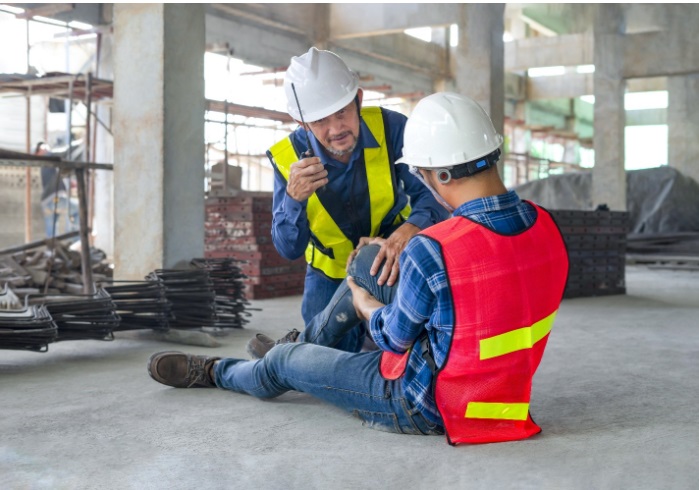Virtually every workplace conducts some form of periodic work site safety inspections. This process is a typical component of a comprehensive health and safety plan. But why are they done? Therein lies the interesting question.
“We have to.” Safety is often driven by compliance—either to a regulation or a company policy. Certainly, compliance is a factor and one that is often developed with a specific purpose in mind. For example, OSHA has a clear imperative that employers are required to provide their employees with a place of employment that “is free from recognizable hazards that are causing or likely to cause death or serious harm to employees.” Work site inspections serve as the vehicle to record hazards and document abatement.
As the saying goes—if it is not documented, it did not happen. With that in mind, can companies meet the regulatory requirement by simply walking about occasionally, and fix what is found? Perhaps. While this satisfies a basic requirement, simply walking around and checking a box does not necessarily offer assurance that the workplace is free of recognizable hazards and meet the spirit and intent of the purpose the regulation is trying to express.
“We want to, because we care.” Conducting workplace safety inspections can serve a greater purpose than simply meeting a compliance requirement. In fact, work site safety inspections can be a vital part of your injury prevention efforts if done well. They can help reassure workers that the workplace is safe, the voice of the frontline worker is being heard, and help the company demonstrate that it cares.
Besides these important reasons, a crucial element is missing – the ‘why’. What is the purpose or ‘vision’ of the safety inspection and observation program? Having a vision provides a sense of purpose and direction for the program. The vision defines short and long-term goals as well as guides the decisions along the way.
Here are a few examples of safety observation program visions that serve as the foundation of programs that began to ask ‘why’. These organizations took a new look at their observation program and began to put shape to a program that traditionally only had little structure other than a checklist and a directive.
- Oil & Gas
Our vision is to proactively evaluate our risk to prevent any harm to our employees.
We will utilize a proactive and consistent observation program to collectively evaluate and mitigate risk on our sites so that we can prevent incidents, protect our workers, and create a better value to our family, company, and clients.
- Automotive
As an overall team, we aim to improve workplace safety using a tool to collect data efficiently and analyze data effectively so that it allows for greater transparency and visibility into the safety process. This will allow us to build a process to proactively focus our attention so that we can prioritize safety activity to prevent injuries. This process will allow us to drive meaningful engagement and ultimately make evidence-based decisions to drive continuous improvement.
- Utilities
This document details the overall strategy for safety and health observations at our company.
Safety observations play a critical role in helping to identify and control risk exposures, reinforce safe behaviors, drive a speak up culture, and ultimately reduce employee injuries. The primary objectives of our safety observation program are to increase awareness of hazards and exposures and to mitigate risk of injuries by reinforcing positive work practices and procedures and proactively addressing at-risk hazards.
Our safety observation program gives leaders an opportunity to interact with employees, reinforce positive safety behaviors and identify, track, and reduce or eliminate risks. The collection and tracking of this information will enable each department to analyze results to better understand safety related strengths and gaps and influence future safety performance.
Together we will work to prevent injuries using an improved system that emphasizes people, process, and technology. Everyone will have a part to play to achieve this through a system of awareness, accountability, and partnership.
- Construction
Our vision is to proactively evaluate our risk to prevent any harm to our employees. This will be done by using a continuous improvement process to review and assess the findings of the safety observation program. Maintaining a successful safety record enables us to protect our most valuable assets – our employees.
- Manufacturing
Create a culture designed to continuously improve safety where everyone has a voice and a role in making this happen. As an organization, we have adopted an innovative, technology driven solution that provides insight and visibility into the safety of the organization that will facilitate this improvement progress. The program will emphasize employee involvement at every level – both management/leadership and front-line worker. Our focus will shift to more leading indicators to measure safety performance at the front-line level with lagging indicators reserved for overall company performance.
- Automotive
Through the creation of, commitment to, and active participation in a proactive and streamlined observation program, we will collectively evaluate and mitigate risk on our jobsites so that we can prevent incidents and protect our team members and create a better value to our family, company and clients.
Clearly the vision of the program does not spell out how the program is done. What it does do, however, is to clarify the direction, motivates action in the right direction and helps to align and coordinate focus of purpose and intent. The vision signifies a solid foundation upon which the program can be built, implemented, and conducted. A great vision will lead to an even better program.
“Dissatisfaction and discouragement are not caused by the absence of things but the absence of vision.”
AUTHOR BIO

Cary comes to the SafetyStratus team as the Vice President of Operations with almost 30 years of experience in several different industries. He began his career in the United States Navy’s nuclear power program. From there he transitioned into the public sector as an Environmental, Health & Safety Manager in the utility industry. After almost thirteen years, he transitioned into the construction sector as a Safety Director at a large, international construction company. Most recently he held the position of Manager of Professional Services at a safety software company, overseeing the customer success, implementation, and process consulting aspects of the services team.
At SafetyStratus, he is focused on helping achieve the company’s vision of “Saving lives and the environment by successfully integrating knowledgeable people, sustainable processes, and unparalleled technology”.



